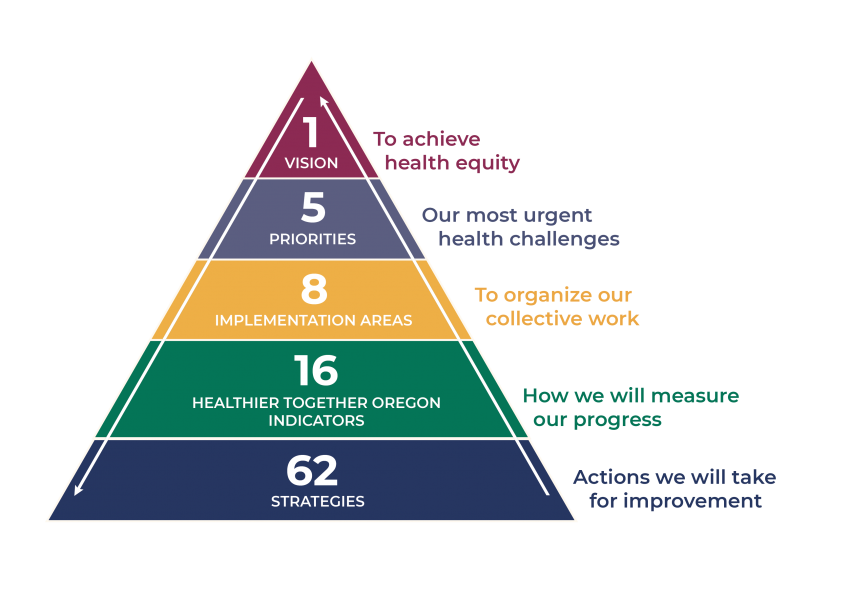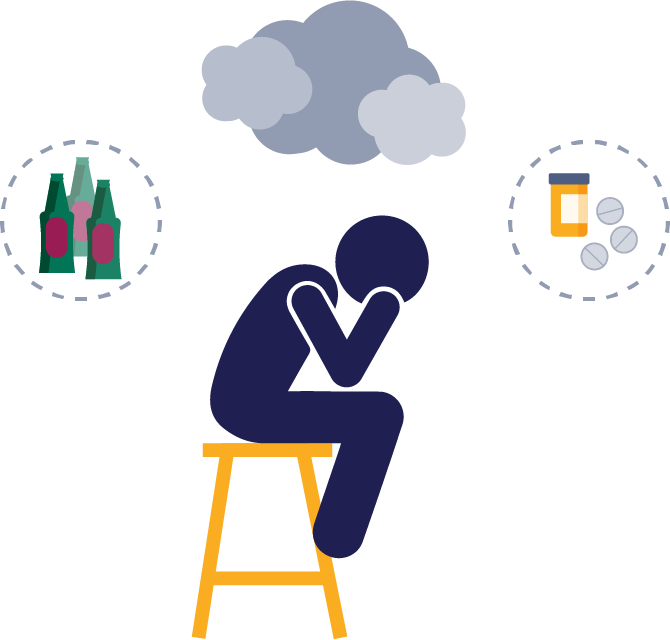Priorities
In early 2019, the PartnerSHIP identified five priority issues that impact communities more than others. These five priorities are social issues that affect health outcomes. Each of these priorities is addressed throughout the eight implementation areas of the plan.
Implementation Plan

The Five Priorities
Institutional Bias

Institutions are supposed to serve all people equally.
Institutions include:
- Governments
- Higher education
- Health care
Our data and experiences show that institutions do not live up to that. Instead, resources, policies and practices of institutions discriminate. It is easier to work with institutions and have better outcomes if the person or community is white, able-bodied, cis-gendered and speaks English. This discrimination results in adverse health outcomes for affected groups. These include people of color, people with low income, people with disabilities and people who identify as LGBTQ+.
-
Expose and reduce the impact of institutional biases that influence health, by identifying and championing work across systems, structures, policies, communities and generations, so that all people in Oregon are empowered and have the opportunity to participate fully in decisions to achieve optimal health.
Adversity, trauma
and toxic stress

Adversity, trauma and toxic stress happen to people and communities.
These negative experiences come from:
- Abuse and neglect
- Living in poverty
- Incarceration
- Family separation
- Exposure to racism and discrimination
These events have a lifelong effect on health. They are linked with outcomes like substance use and addiction, suicide and even some cancers.
-
Prevent trauma, toxic stress, and adversity through data driven policy, system and environmental change.
-
Increase resilience by promoting safe, connected and strengths-based individuals, families, caregivers and communities.
-
Mitigate trauma by promoting trauma informed systems and services that assure safety and equitable access to services, and avoid re-traumatization.
Behavioral health

Behavioral health includes mental health and substance use. Substance use is the third leading cause of death in our state. Also, Oregon has one of the highest rates of mental illness in the country.
Mental distress can lead to:
- Lower quality of life
- Increased rates of suicide
- Unemployment
- Increased use of alcohol and other drugs
Mental illness and the use of alcohol and other drugs, has a profound and negative impact on many families.
-
Reduce stigma and increase community awareness that behavioral health issues are common and widely experienced.
-
Increase individual, community and systemic resilience for behavioral health through a coordinated system of prevention, treatment and recovery.
Economic drivers of health, such as housing, transportation and living wage jobs

Health depends on access to safe housing, food, jobs and transportation. Poverty strongly predicts poor health. Many households struggle to get out of poverty. This is the case even if a person has a job. The reason for this is the high cost of living or raising a family.
People living in poverty experience higher rates of:
- Premature death
- Increased rates of homelessness
- Mental distress
- Food insecurity
-
Increase the percentage of Oregonians earning a livable wage by raising public awareness of the correlation between health and economic sufficiency and advocating for evidence-based policies to improve economic sufficiency.
-
Ensure that all people in Oregon live, work, play in a safe and healthy environment and have equitable access to stable, safe, affordable housing, transportation and other essential infrastructure so that they may live a healthy resilient life.
-
Increase equitable access to culturally appropriate nutritious food regardless of social or structural barriers by addressing the underlying issues in food availability.
Access to equitable
preventive health care

A higher number of people now have health insurance. Still, it is hard for many to get to a health care provider or see a dentist. One reason is because they do not feel comfortable with their provider due to language barriers or cultural difference.
Other reasons include:
- Provider shortages
- Transportation barriers
- Health care costs
-
Increase equitable access to and uptake of community-based preventive services.
-
Increase equitable access to and uptake of clinical preventive services.
-
Implement systemic and cross-collaborative changes to clinical and community-based health related service delivery to improve quality, equity, efficiency and effectiveness of services and intervention.
